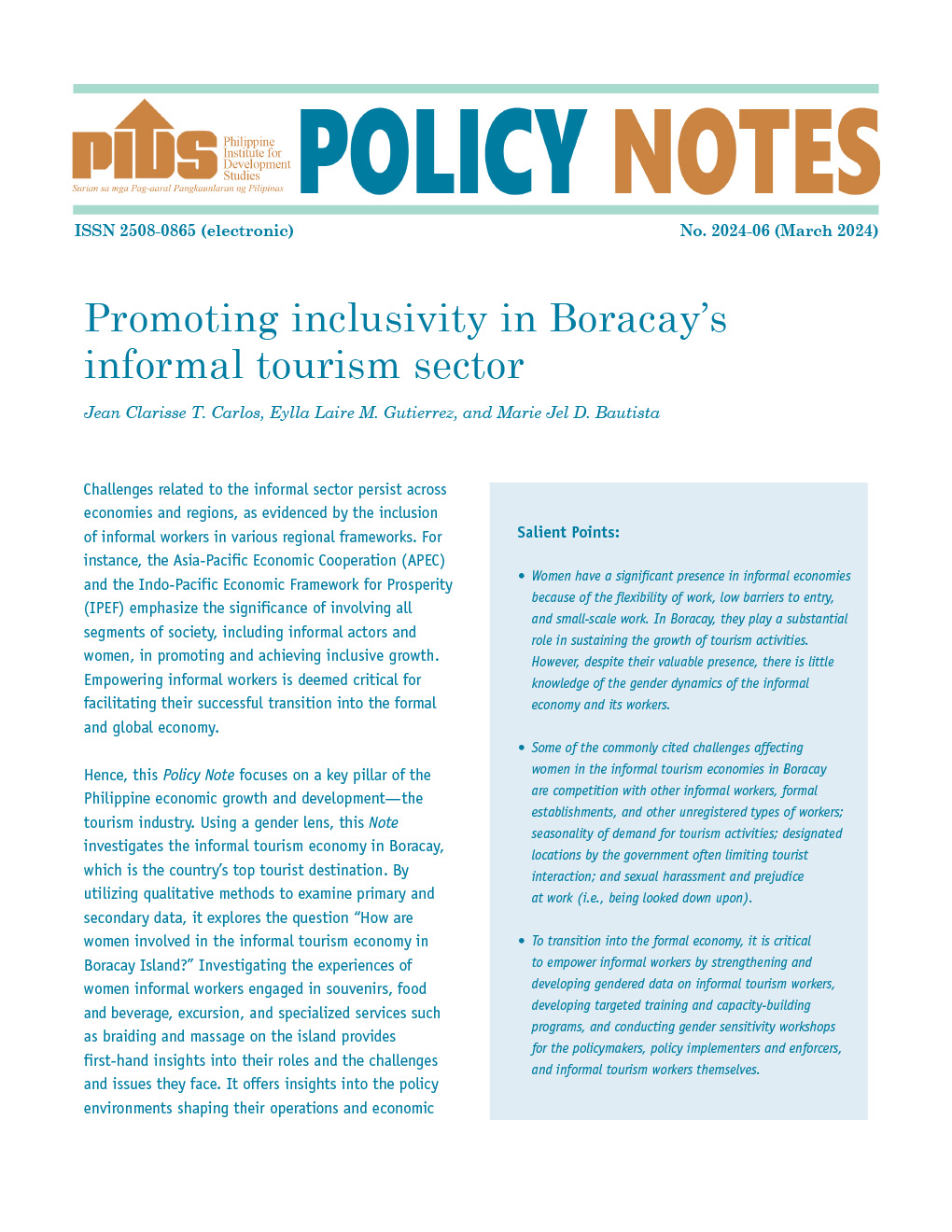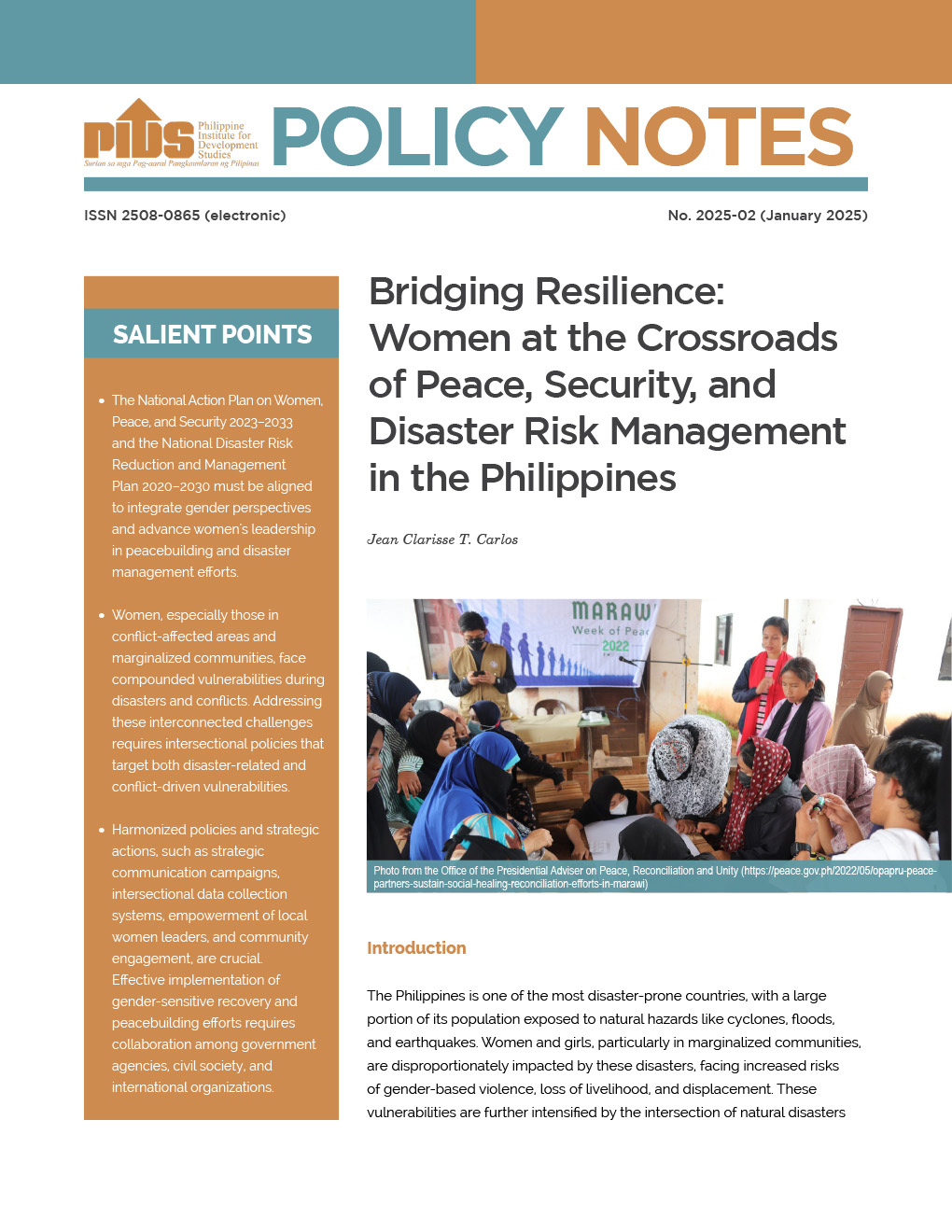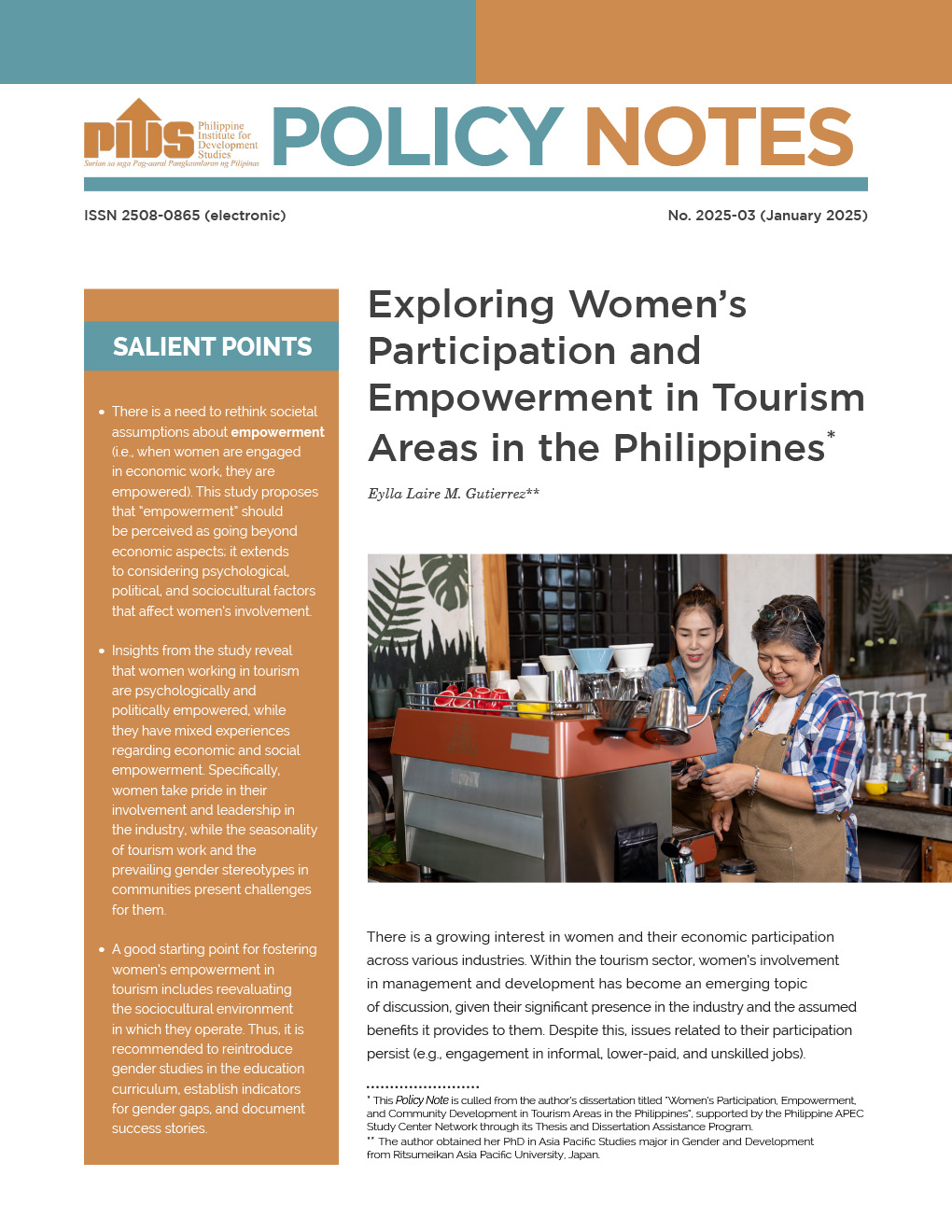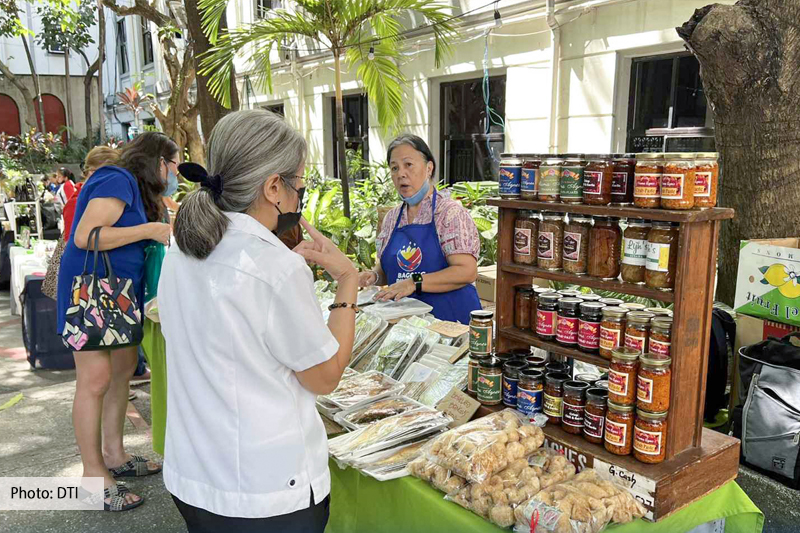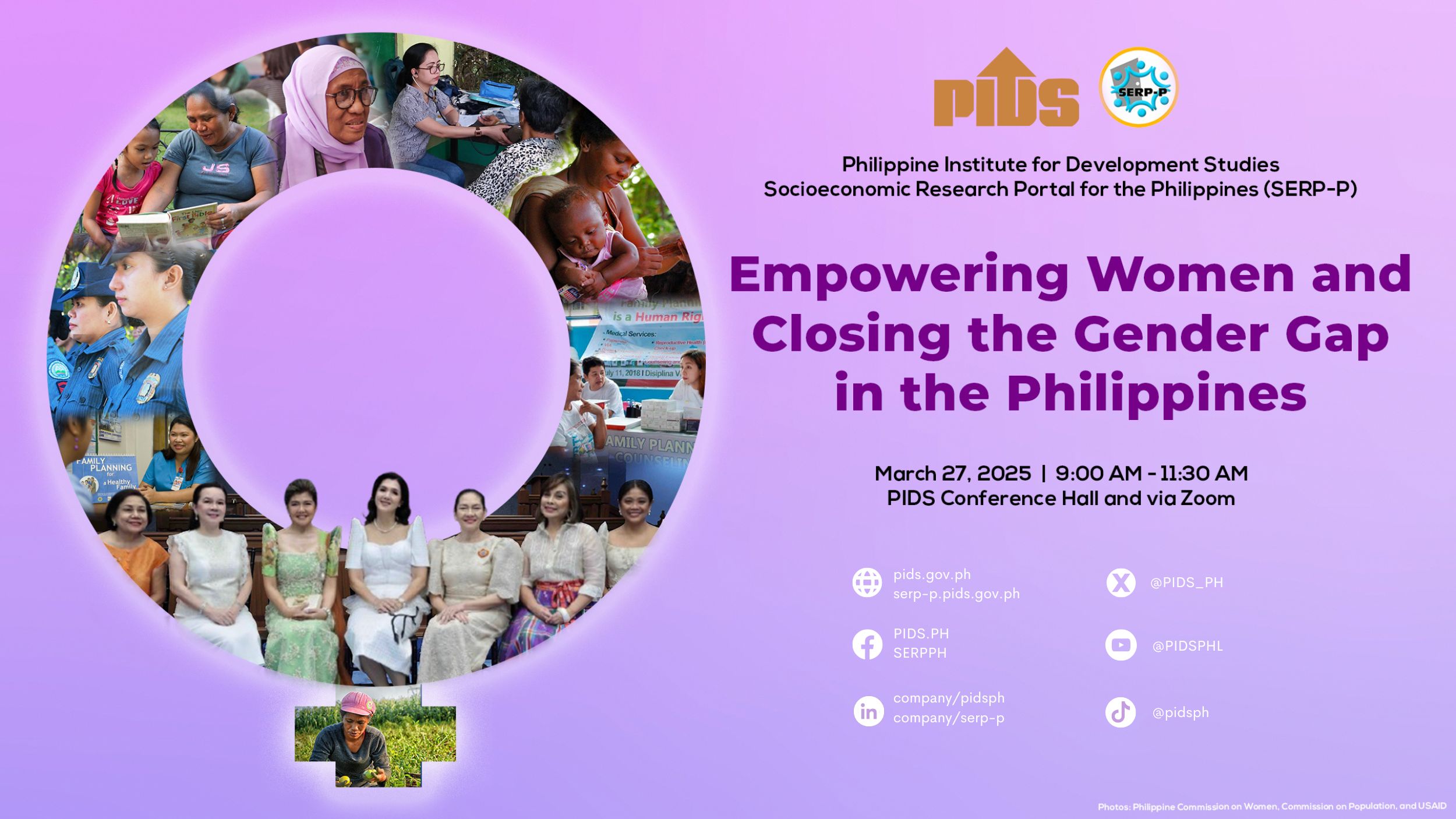Despite being listed by the World Economic Forum as the best performer in gender outcomes among the Association of Southeast Asian Nations member-states, the Philippines exhibits wide gender disparities in economic opportunities, according to a recent publication released by state think-tank Philippine Institute for Development Studies
Authored by Senior Research Fellow Jose Ramon Albert and Research Assistant Jana Flor Vizmanos, the policy note looked at trends in selected Sustainable Development Goals indicators and observed that women are mostly at a disadvantage in labor participation, including in employment rate, wage, and vulnerable employment.
In the Philippines, fewer women are part of the labor force, according to the study.
About four in five working-age Filipino men are part of the labor force, while only half of women aged 15 years and over are in the labor force,” the authors said, adding that this is noticeable across the entire ASEAN region.
Furthermore, while unemployment rates for women dropped faster than those for men, the rates are still higher among women aged 15 to 24 than among men belonging to the same age group.
The authors, however, warned that looking solely at the unemployment rate can be deceptive as this may lead to the perception that “women in the Philippines who join the labor force have similar economic opportunities as men.
Latest data show working women are predominantly in the services sector (71 percent) while the rest of them are in the industry (10 percent) and agriculture sectors (19 percent).
Albert and Vizmanos also revealed that more females than males are involved in vulnerable employment, which is characterized by inadequate earnings, low productivity, and poor working conditions.
Statistics show that about eight in 20 women are in vulnerable employment compared to seven in 20 men.
This means a bigger share of employed women in the country are engaged in jobs lacking decent working conditions,” thus limiting their opportunities for labor benefits, the authors said.
However, in the Philippines, women slightly earn more than their men, according to the study.
Statistics revealed that high-level positions generally have wages favoring women. However, they are less compensated than men when they work as technicians and associate professionals, clerks, service workers, and shop and market sales workers, despite them having the bigger share in employment.
On the contrary, in areas where men have a higher share of employment, such as in trades, plant and machine operation, labor and unskilled work, and special occupations, they are more compensated than women.
To address these gender gaps, the government needs to examine the reasons why one gender dominates the other in particular occupations, the authors suggested.
There is also a need to look into persistent gender wage gaps in some sectors and occupations, among other recommendations.
Authored by Senior Research Fellow Jose Ramon Albert and Research Assistant Jana Flor Vizmanos, the policy note looked at trends in selected Sustainable Development Goals indicators and observed that women are mostly at a disadvantage in labor participation, including in employment rate, wage, and vulnerable employment.
In the Philippines, fewer women are part of the labor force, according to the study.
About four in five working-age Filipino men are part of the labor force, while only half of women aged 15 years and over are in the labor force,” the authors said, adding that this is noticeable across the entire ASEAN region.
Furthermore, while unemployment rates for women dropped faster than those for men, the rates are still higher among women aged 15 to 24 than among men belonging to the same age group.
The authors, however, warned that looking solely at the unemployment rate can be deceptive as this may lead to the perception that “women in the Philippines who join the labor force have similar economic opportunities as men.
Latest data show working women are predominantly in the services sector (71 percent) while the rest of them are in the industry (10 percent) and agriculture sectors (19 percent).
Albert and Vizmanos also revealed that more females than males are involved in vulnerable employment, which is characterized by inadequate earnings, low productivity, and poor working conditions.
Statistics show that about eight in 20 women are in vulnerable employment compared to seven in 20 men.
This means a bigger share of employed women in the country are engaged in jobs lacking decent working conditions,” thus limiting their opportunities for labor benefits, the authors said.
However, in the Philippines, women slightly earn more than their men, according to the study.
Statistics revealed that high-level positions generally have wages favoring women. However, they are less compensated than men when they work as technicians and associate professionals, clerks, service workers, and shop and market sales workers, despite them having the bigger share in employment.
On the contrary, in areas where men have a higher share of employment, such as in trades, plant and machine operation, labor and unskilled work, and special occupations, they are more compensated than women.
To address these gender gaps, the government needs to examine the reasons why one gender dominates the other in particular occupations, the authors suggested.
There is also a need to look into persistent gender wage gaps in some sectors and occupations, among other recommendations.

